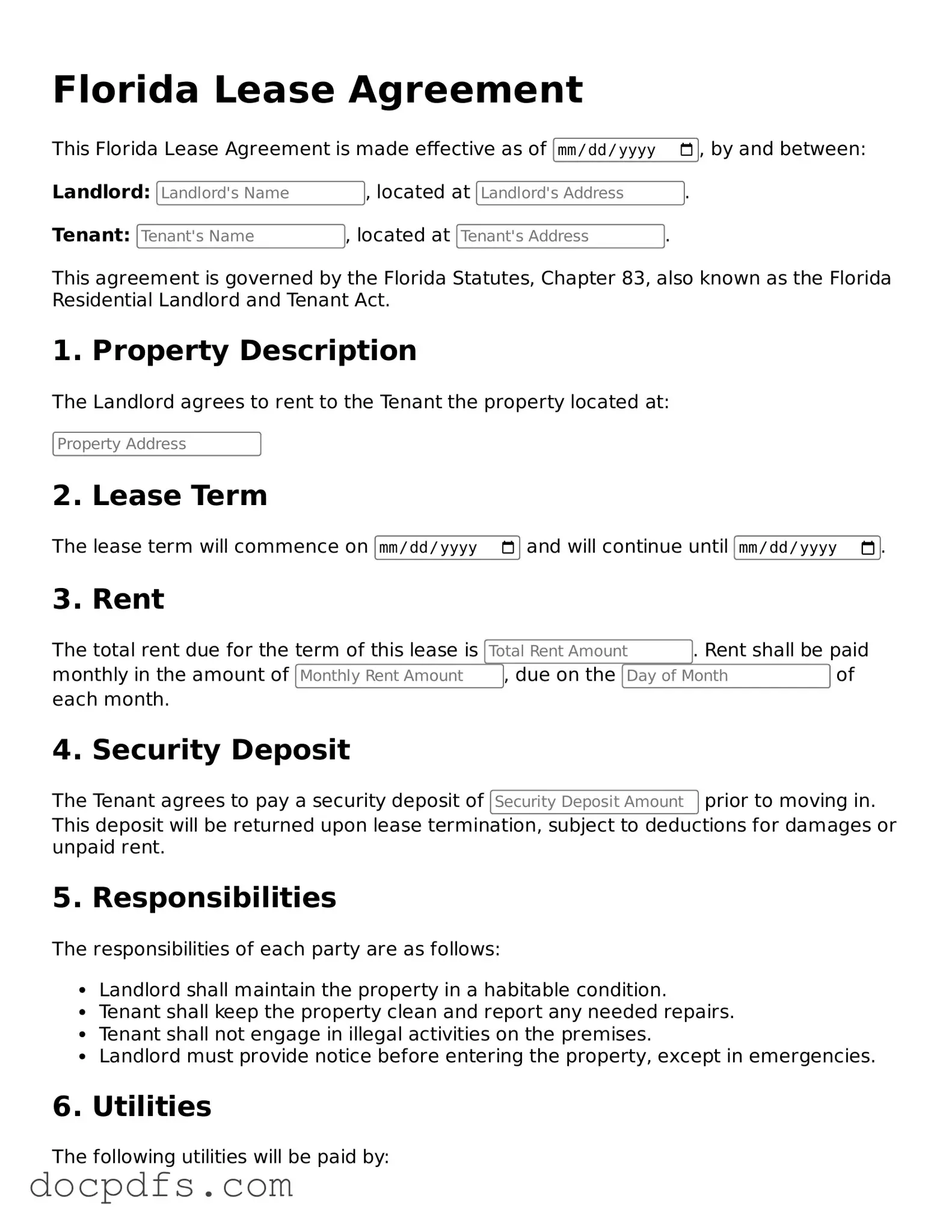In Florida, a lease agreement serves as a crucial document that outlines the terms and conditions between landlords and tenants, ensuring that both parties understand their rights and responsibilities. This legally binding contract typically includes essential elements such as the duration of the lease, the amount of rent due, and the payment schedule. Additionally, it addresses security deposits, maintenance responsibilities, and the rules regarding pets and alterations to the property. By clearly defining these aspects, the lease agreement helps prevent misunderstandings and disputes that may arise during the rental period. Furthermore, it often includes provisions for early termination, renewal options, and the consequences of breach of contract, ensuring that both landlords and tenants are protected. Understanding the intricacies of the Florida Lease Agreement form is vital for anyone involved in a rental situation, as it lays the groundwork for a successful and harmonious landlord-tenant relationship.
